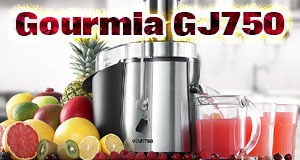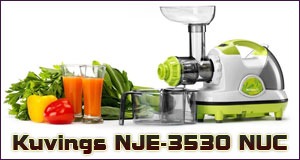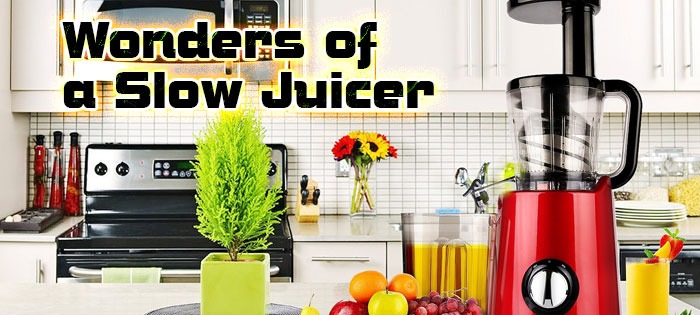Juicing is quite popular for people of all ages and body types. You can take advantage of the different juicing benefits available to you. One of best juicers on the market today (according to a lot of consumers, at least) is the slow juicer, also known as the masticating juicer, single-gear juicer, or cold press juicer.
“Masticate” means “to chew.” Therefore, slow juicers feature a single gear or an auger with blades that do the basic function of crunching, “masticating,” or “chewing” fruits or vegetables into a pulp. This releases the juice in the process. This action breaks open the cell membranes of any fruit, vegetable, or whatever produce you put into the juicer. Then it releases the produce’s vital nutrients and enzymes which results in a vibrantly colored juice which is also rich in enzymes, vitamins, and minerals.

A slow juicer runs at a speed of 80 to 120 RPM, which does not disturb the cellular structure of the fruits and vegetables thrown into it. Unlike the centrifugal juicer, the masticating juicer’s low speed also generates very little friction or heat and thus prevents oxidation and complete loss of inherent nutrients in fruits and vegetables.

If you have tried extracting juices using both a centrifugal and a masticating juicer, you will recognize an unmistakable difference between the two. Juices processed from a centrifugal juicer are typically oxidized and give off a weird, somewhat metallic taste. Juices processed from a masticating juicer, on the other hand, have a more un-oxidized natural color and great flavor, as well.
There are two types of single-gear juicers:
- Horizontal – the first single-gear juicer ever released was designed in the horizontal gear type, which has improved over the years. In the USA, the Samson GB9000 series and the Omega J8000 series are some of the most popular horizontal gear juicer brands.
- Vertical – Considered as more revolutionary than the horizontal, the vertical gear juicer also looks cool to boot and will be a welcome addition to every sleek modern kitchen. It is also space-saving, reduces clutter on the kitchen counter, and allows the use of a bigger and more efficient auger.
If you need a top rated juicer that processes very tough or fibrous produce into a fully-yielded and nutrients-rich natural juice, perhaps the slow juicer will suit to your juicing needs!
So where can you buy juicers such as the excellent slow juicer? You have to get it from the manufacturers themselves or buy them from online markets (but make sure to read the helpful juicer reviews first!).


